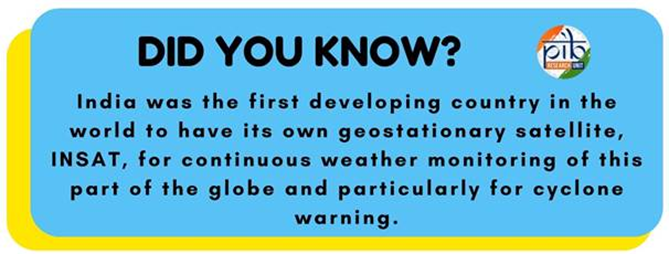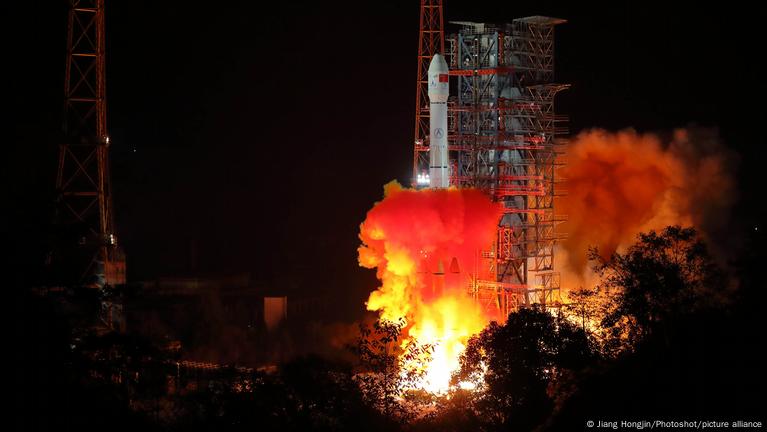- Courses
- GS Full Course 1 Year
- GS Full Course 2 Year
- GS Full Course 3 Year
- GS Full Course Till Selection
- Online Program
- GS Recorded Course
- NCERT (Recorded 500+ Hours)
- Polity Recorded Course
- Geography Recorded Course
- Economy Recorded Course
- AMAC Recorded Course
- Modern India, Post Independence & World History
- Environment Recoded Course
- Governance Recoded Course
- Science & Tech. Recoded Course
- International Relations and Internal Security Recorded Course
- Disaster Management Module Course
- Ethics Recoded Course
- Essay Recoded Course
- Current Affairs Recoded Course
- CSAT
- 5 LAYERED ARJUNA Mentorship
- Public Administration Optional
- ABOUT US
- OUR TOPPERS
- TEST SERIES
- FREE STUDY MATERIAL
- VIDEOS
- CONTACT US
150 Years of India Meteorological Department (IMD)
150 Years of India Meteorological Department (IMD)
- The India Meteorological Department (IMD), established in 1875, is celebrating its 150th anniversary on 14th January 2025.
- Over the years, IMD has been instrumental in providing critical weather and climate services, especially in areas like disaster management, agriculture, aviation, and public safety.
- As the National Meteorological Service of India, IMD plays a vital role in advancing meteorological science, ensuring the safety of lives, promoting economic stability, and addressing the impacts of climate change.

1. Historical Context and Foundation:
- Establishment: IMD was founded in 1875 under the British colonial administration following a series of catastrophic weather events such as the 1864 tropical cyclone in Calcutta and monsoon failures in 1866 and 1871, which caused widespread devastation.
- These events emphasized the need for organized meteorological services.
- Objective: Initially, IMD's primary purpose was to provide weather forecasts for agriculture and disaster management, thus enhancing the safety and productivity of India's agrarian economy.
Key Achievements Over the Years : Improvements in Weather Forecasting (2014 - 2024)
|
Category |
2014 Data |
2024 Data |
Key Improvements/Impact |
|
Doppler Weather Radars |
15 radars |
39 radars |
Enhanced radar network improves the tracking of severe weather events, especially cyclones and storms. |
|
Automatic Weather Stations |
675 stations |
1,208 stations |
Increased number of stations that measure temperature, humidity, wind, and rainfall, providing real-time data for improved forecasting. |
|
High Wind Speed Recorders |
19 recorders |
37 recorders |
More recorders to track strong winds, vital for monitoring cyclones and storms. |
|
Rainfall Monitoring Stations |
3,995 stations |
6,095 stations |
Increased stations provide detailed rainfall data, improving flood prediction and water resource management. |
|
New Automated Systems |
N/A |
7 new automated systems |
New systems, including heliport weather monitoring, enhance data accuracy and forecast reliability. |
|
Geostationary Satellites |
1 satellite (INSAT 3D) |
2 satellites (INSAT 3DR and INSAT 3DS) |
The addition of a second satellite improves continuous weather monitoring, providing up-to-date forecasts. |
|
Resolution of Weather Models |
25 km resolution (for large areas) |
12 km resolution (for localized areas) |
Higher resolution allows for more accurate local forecasts, improving prediction capabilities for towns and villages. |
|
Heatwave Prediction Accuracy |
50% accuracy (2 days in advance) |
95% accuracy (2 days in advance) |
Major improvement in predicting heatwaves with higher accuracy, enabling better preparedness. |
|
Thunderstorm Prediction Accuracy |
50% accuracy (hourly) |
86% accuracy (hourly) |
Enhanced accuracy in thunderstorm predictions, with improved hourly forecasting. |
|
Heavy Rainfall Prediction Accuracy |
50% accuracy (3 days in advance) |
78% accuracy (3 days in advance) |
Improved accuracy in predicting heavy rainfall, reducing the risk of floods and improving response strategies. |
|
Cyclone Track Prediction Accuracy |
N/A |
Improved by 35-40% |
Increased accuracy in predicting cyclone tracks, allowing for better warnings and saving lives during cyclonic events. |
Vision for the Future: Vision 2047
IMD has set ambitious goals in its Vision Document 2047 to ensure India is weather-ready by the 100th year of independence in 2047:
-
Zero-Error Forecasting:
- IMD aims for zero-error forecasts for all severe weather up to 3 days in advance at the block level.
- Forecast accuracy goals for 2047:
- 90% accuracy for 5-day forecasts.
- 80% accuracy for 7-day forecasts.
- 70% accuracy for 10-day forecasts.
-
Eliminating Human Fatalities:
- IMD aims to completely eliminate human fatalities caused by severe weather events by improving forecasting and issuing timely warnings.
-
Improved Weather Models:
- IMD plans to improve the resolution of its weather models from 12 km to 5-6 km by 2047, allowing for more detailed, localized forecasts at the village panchayat level.
Mission Mausam: Moving Towards Weather Management
- Launched by Prime Minister Narendra Modi in January 2025, Mission Mausam represents IMD’s shift from just forecasting weather to actively managing weather.
- This initiative aims to enhance the country’s preparedness for extreme weather events, climate resilience, and disaster mitigation.
Key aspects of Mission Mausam include:
-
Weather Modification:
- Cloud Seeding: IMD plans to use cloud seeding techniques to modify rainfall patterns, particularly in drought-prone areas.
- The Indian Institute of Tropical Meteorology (IITM) in Pune will establish a cloud chamber to study cloud formation and improve cloud seeding techniques.
-
Technological Innovations:
- Unmanned Aerial Vehicles (UAVs): UAVs will be used to take weather observations in remote areas, enhancing data collection in regions where traditional equipment may not be deployed.
- IoT-based Sensors: These will be deployed across India to provide real-time data on weather conditions, even in hard-to-reach areas.
- Climate Reference Stations: IMD plans to set up regional climate stations for more accurate monitoring of local weather patterns.
-
Upper Atmosphere Monitoring:
- IMD will implement a 100 km x 100 km grid for upper atmosphere monitoring using satellites, radars, and wind profilers.
-
100% Detection Capability:
- By 2047, IMD aims to achieve 100% detection capability for all weather phenomena, ensuring that no extreme weather event goes unnoticed and that accurate warnings are issued in time.
Major Contributions and Achievements:a. Advancements in Weather Forecasting:
b. Indigenous Technology and Self-Reliance:
c. Crowdsourcing and Public Engagement:
d. Agro-Meteorological Services:
|
Conclusion:
IMD’s 150-year legacy showcases its crucial role in safeguarding lives, supporting economic development, and advancing scientific research in India. The department has made significant strides in weather forecasting, climate resilience, and disaster management. Through initiatives like Mission Mausam and its Vision 2047, IMD is positioning India to be weather-ready and climate-smart by the nation’s centenary of independence. As India faces growing challenges from climate change and extreme weather events, IMD's commitment to innovation and service will continue to be a cornerstone of national resilience.
|
Also Read |
|
UPSC Foundation Course |
UPSC Daily Current Affairs |
UPSC Monthly Mgazine |
CSAT Foundation Course |
Free MCQs for UPSC Prelims |
UPSC Test Series |
ENSURE IAS NOTES |
Our Booklist |




